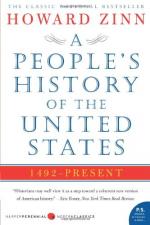
|
| Name: _________________________ | Period: ___________________ |
This test consists of 15 multiple choice questions and 5 short answer questions.
Multiple Choice Questions
1. How many men did Columbus leave behind at the Navidad fort?
(a) 39
(b) 20
(c) 59
(d) 19
2. What percentage of profits was Christopher Columbus contracted to receive for the goods he brought back to the King and Queen of Spain during his voyage when he accidentally encountered the Americas?
(a) 40%
(b) 25%
(c) 10%
(d) 5%
3. What title refers to the fictional story of a woman put on trial in 1747 for having an illegitimate child?
(a) The Speech of Polly Baker
(b) The Empire and the People
(c) The Scarlet Letter
(d) The Unreported Resistance
4. In what year was the first representative assembly introduced in Jamestown in the form of the Virginia House of Burgesses?
(a) 1600
(b) 1625
(c) 1619
(d) 1711
5. Christopher Columbus erected the Navidad fort at the site of what present-day country?
(a) Peru
(b) Haiti
(c) Brazil
(d) Trinidad
6. What name refers to a 19th century secret society composed mainly of Irish and Irish-American coal miners?
(a) The Cupie Dolls
(b) The Molly Maguires
(c) The Black Underground
(d) The Lowell Mill Girls
7. What were the two main resources sought by Christopher Columbus on his voyage when he first encountered the Arawaks?
(a) Spices and silver
(b) Diamonds and gold
(c) Gold and spices
(d) Slaves and wheat
8. When did Christopher Columbus first encounter the Arawak people?
(a) 1502
(b) 1499
(c) 1479
(d) 1492
9. According to the author in Chapter 7, “In 1820, 120,000 Indians lived east of the Mississippi. By 1844, fewer than” how many were left?
(a) 80,000
(b) 30,000
(c) 20,000
(d) 100,000
10. The ship headed for Jamestown that J. Saunders Redding writes about in Chapter 2 carried how many slaves?
(a) 50
(b) 20
(c) 30
(d) 100
11. On Columbus’s second voyage for the King and Queen of Spain, he was unable to locate gold so he instead filled his ships with how many slaves?
(a) 200
(b) 150
(c) 50
(d) 500
12. Where was Amelia Bloomer born?
(a) Homer, New York
(b) Lexington, Kentucky
(c) Concord, Massachusetts
(d) Jamestown, Virginia
13. The Republic of Texas was an independent sovereign nation in North America from 1836 until what year?
(a) 1846
(b) 1923
(c) 1859
(d) 1862
14. When was W. E. B. Du Bois born?
(a) 1865
(b) 1800
(c) 1868
(d) 1798
15. The author notes in Chapter 4 that by 1760, there had been how many uprisings designed to create a coup to overthrown various branches of the colonial governments?
(a) 5
(b) 32
(c) 25
(d) 18
Short Answer Questions
1. What name refers to female workers who came to work for the textile corporations in Lowell, Massachusetts, during the Industrial Revolution in the United States?
2. What trade does the author assert was largely responsible for the growth of slavery in the United States in Chapter 9?
3. When was the Tea Act passed by the British Parliament?
4. Who founded the first school for women’s higher education, the Troy Female Seminary?
5. When did the Stono Rebellion take place?
|
This section contains 424 words (approx. 2 pages at 300 words per page) |

|




